You scan the water excitedly, trying to guess where the leviathan will surface. Suddenly, a burst of vapor explodes from the clear blue water a stone’s throw from the boat. You find yourself eye to eye with one of the largest animals that ever existed on planet Earth.
The idea of visiting Australia may conjure images of the Great Barrier Reef, The Outback, Uluru, kangaroos, and the Sydney Opera house. But the country boasts another world-class attraction that you may not have even been aware of: the incredible whale migration that occurs on both coasts of Australia. Whale watching in Australia is among the most reliable, exciting, and well-managed on the planet.
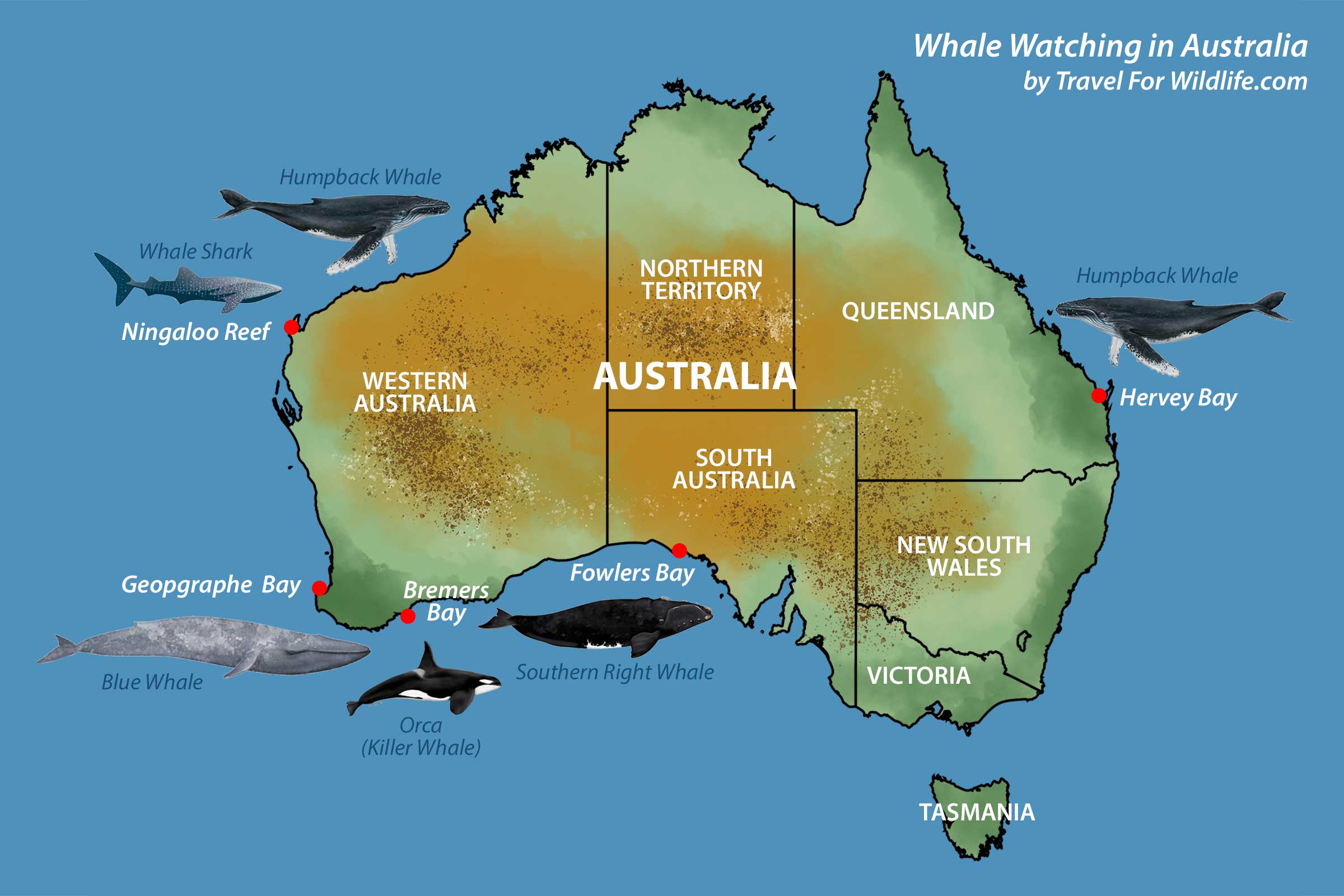
Whale watching in Australia
Australia is a cetacean hotspot. Cetaceans are the order of marine mammals that include whales, dolphins, and porpoises. Of the 90 or so species worldwide, half of them live in or migrate along the waters of Australia (you can see a list of whale species in Australia at end of this post).
The vast island continent boasts a wide variety of coastal habitats that provide critical nurseries, as well as some newly-discovered feeding grounds, for many whale species. There are so many opportunities for whale watching in Australia, whether from a boat, from the air, or even from land. Some vantage points have a viewing platform built just for whale watching! Today, Australian waters provide an important sanctuary for these protected species in the southern hemisphere.
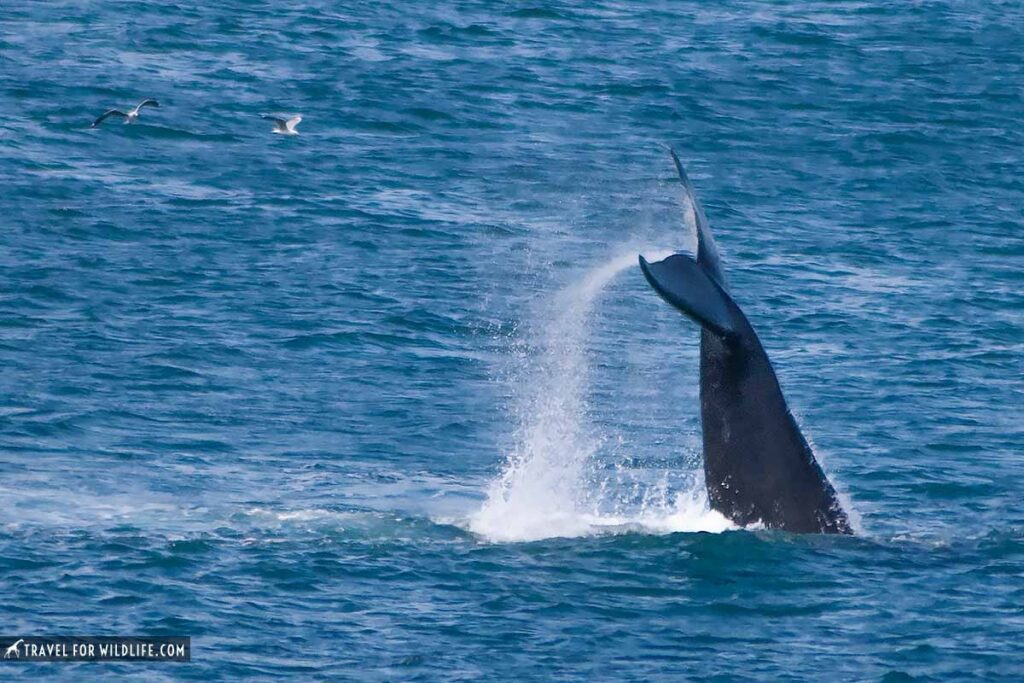
*This post is sponsored by Australian Wildlife Journeys*
Table of Contents
- Whale watching in Australia
- From commercial whaling to whale watching in Australia: a quick history
- Humpback whale migration in Australia
- Southern right whale migration in Australia
- Best time of year to go whale watching in Australia
- Where to go for the best whale watching in Australia
- Whale watching in Hervey Bay, Queensland
- Whale watching at Fowlers Bay, South Australia
- Whale watching in Bremer Bay, Western Australia
- Orca watching at Bremer Bay
- The blue whales of Geographe Bay, Western Australia
- Swimming with whales in Ningaloo, Western Australia
- How you can help whales in Australia
- Whales of Australia
From commercial whaling to whale watching in Australia: a quick history
In the late 1700’s when Europe and North America’s lamps and machines thirsted for whale oil, it’s no surprise that Australia’s plentiful whale populations became a target. Rich businessmen set up shop and whaling became the Australian colony’s first major industry.
Several species, including humpbacks and southern right whales, were hunted for their oil, blubber, bones, and the large baleen plates in their mouths. At the peak of the whaling industry, between 1820 and 1850, around thirteen hundred men plied Australian waters each year on the hunt for whales (source). But in the 1850’s, as petroleum started to replace whale oil and a gold rush lured sailors away, the industry began to decline.
Still, the industry persisted well into the mid 1900’s. New technologies made whalers so efficient at finding and killing their quarry that populations began to crash. Southern right whales were heavily persecuted because they yielded the most blubber and oil, had the longest baleen plates, calved close to shore, moved slowly, and floated after being killed, making them the “right” whale to hunt. In the 1930’s southern right whales received official protection, but their numbers have been slow to recover and they are still federally listed as endangered to this day.
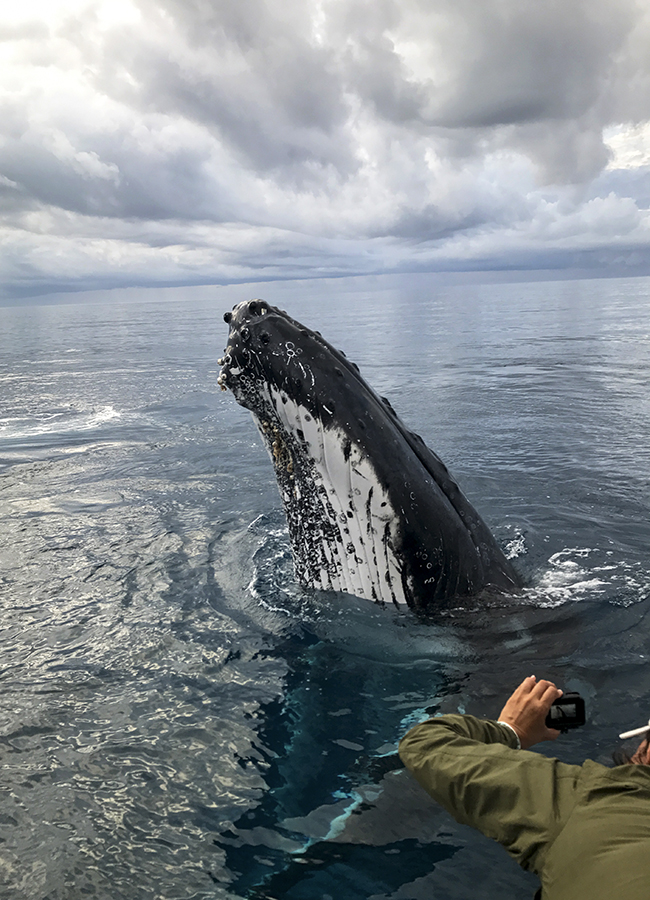
Thankfully, the news has been much better for humpbacks. They suffered heavy losses as well, and the eastern population was nearing extinction by the 1950’s. But since humpback whaling ended in the 1960’s, their numbers have miraculously recovered. Now they’re off the endangered list and appear to have returned to pre-whaling levels. A recent study showed that their exponential growth rate of 10.9% per year is showing no signs of slowing down! Now there are over 50,000 humpbacks jumping for joy in Australian waters.
In the 1950’s, whale watching in Australia was born. And since the official ban on whaling in 1978, both the number of whales and the number of whale watchers have steadily increased. At last count in 2008, more than 1.5 million people were watching whales in Australia annually.
Today, whale watchers not only enjoy a life-changing experience but contribute to the conservation of species through citizen science projects. Whale watching trips are some of the top wildlife tours in Australia.
Humpback whale migration in Australia
Most populations of humpback whales (Megaptera novaeangliae) undertake seasonal migration, spending the winter in low-latitude breeding grounds (tropical and sub-tropical) and the summer in high-latitude feeding grounds (arctic and antarctic).
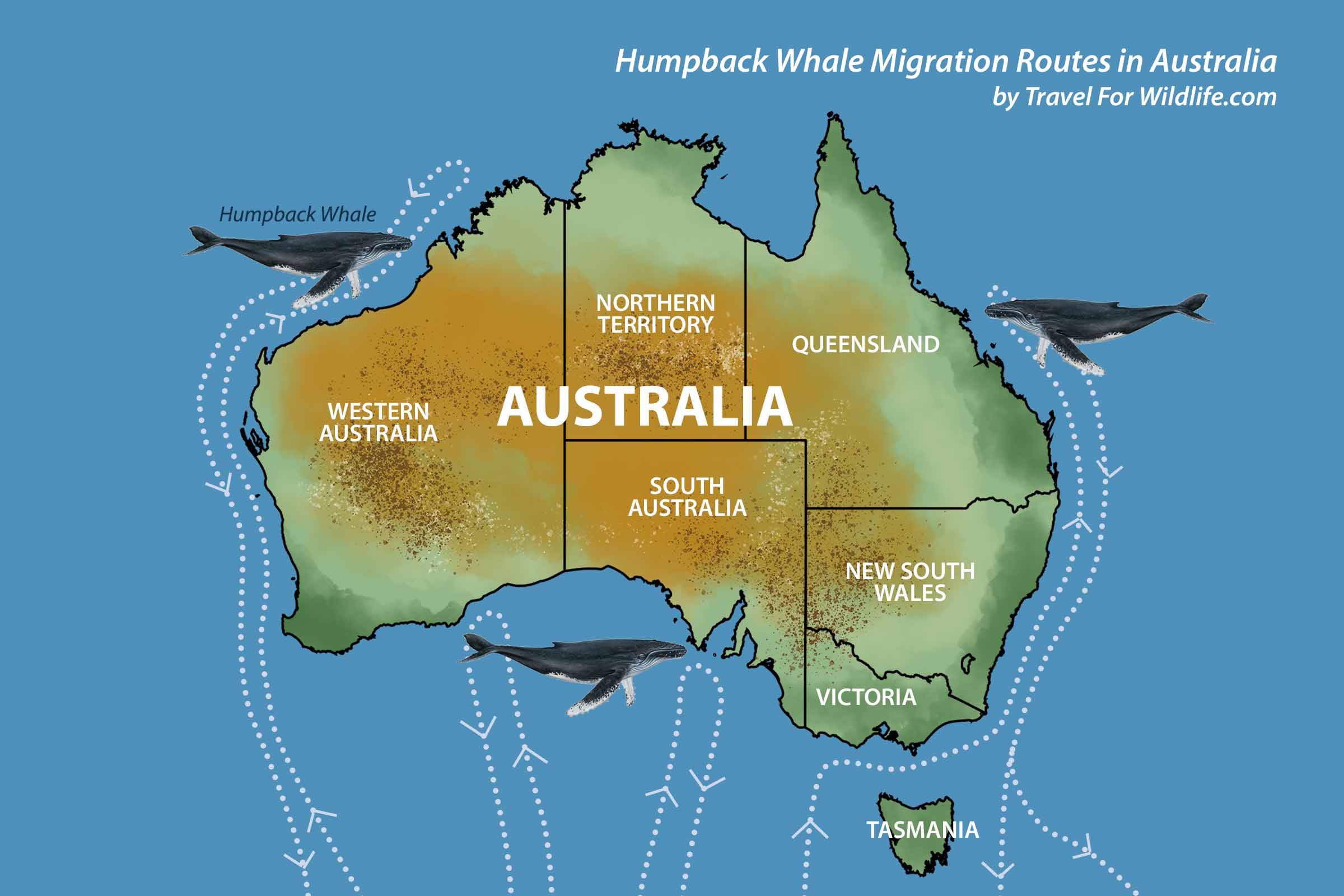
Every year, thousands of humpbacks make the journey from antarctic feeding grounds to the calm, warm waters of Australia to mate and calve (give birth). One population moves up the east coast and another up the west coast, while some simply stick to the southern coast. Some go to New Zealand waters.
In the eastern population, humpback whales arrive off the coast of Melbourne in April, turning east between Tasmania and the mainland and then hook northward up the coast of New South Wales toward the Great Barrier Reef.
In the west, humpbacks start to appear around the southwest coast of Western Australia in late May. They quickly make their way northward to calving grounds extending from Shark Bay (a 9h drive north of Perth) to the coast of Kimberley.
After a couple of months and with calves in tow, humpbacks start a slower journey back south along both coasts. This is a great time to see these new families close to the shore while they rest, play, and socialize.
The eastern population takes a slightly different route than when they arrived and usually head south along the east coast of Tasmania or peel off toward New Zealand across the Tasman Sea.
Southern right whale migration in Australia
Southern right whales (Eubalaena australis) follow a similar path up from antarctic waters a little later in the year. But instead of heading up the east or west coasts, they spend winter on the southern shores of Victoria, South Australia, and Western Australia.
Right whales are easy to tell apart from humpbacks as they are larger and darker, have short paddle-like pectoral fins, (humpbacks have long wing-like flippers), have white bumpy patches around the head called callosities, and are the only species of large whale that doesn’t have a dorsal fin.
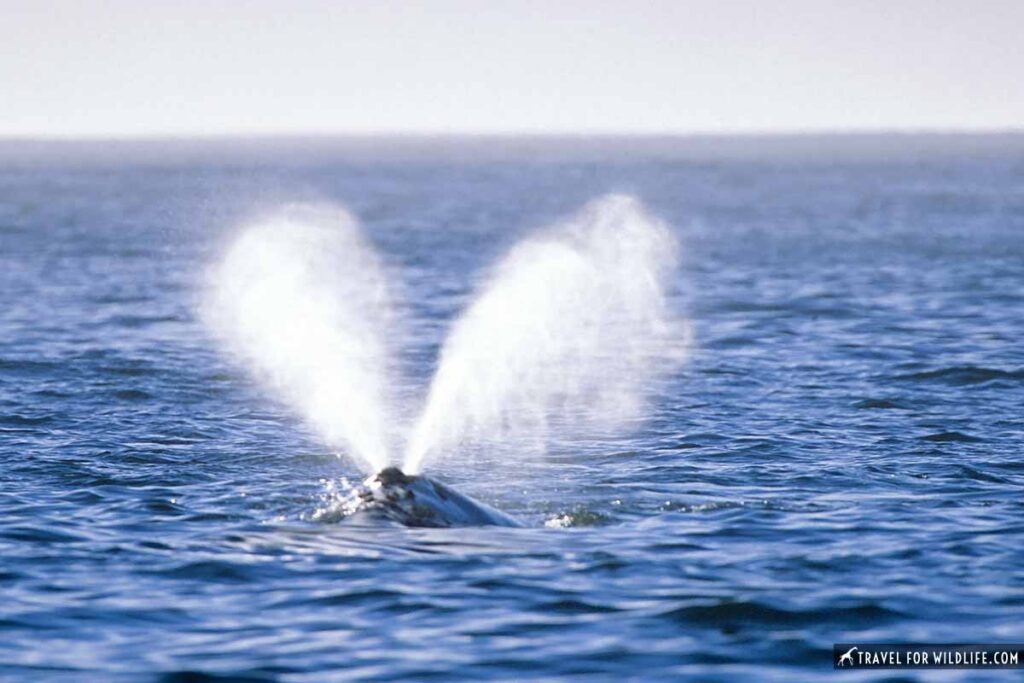
It is also during this time, between June and October, that southern right whales are seen in South Africa and Argentina.
Female southern right whales will spend up to four months in these areas (called whale nurseries) with their newborn calves. About 5% of southern right whale calves are born white, with their color turning pinkish-grey over time.
Best time of year to go whale watching in Australia
To get the most out of your whale-watching trip in Australia you should plan to arrive during migration. While you can probably see a few whales out of season, it is during the migration that you’ll catch the biggest whale spectacle. As a rule of thumb, July to November is when the most whales are present in Australian waters, but check out some of the specific sites below to get the timing right for each.
You don’t want to arrive at your whale-watching destination and find out that the whales just left!
Where to go for the best whale watching in Australia
We’re not going to cover every place you can go whale watching in Australia, (there are a LOT) but here are a few of the best whale-watching locations where you’re practically guaranteed to have an amazing show.
Whale watching in Hervey Bay, Queensland
In 2019, Hervey Bay, on Australia’s east coast, was accredited as the world’s first whale heritage site and it is known as the Whale Watching Capital of Australia. To qualify, a Whale Heritage Site must ensure the highest standard in respectful human-wildlife interactions, as well as show engagement with marine life through education, science, art, music, and other cultural heritage events.
Every July/August, the month-long Hervey Bay Whale Festival celebrates the arrival of the whales. The whole town and visitors from across the globe get together to celebrate the whales and promote their conservation.
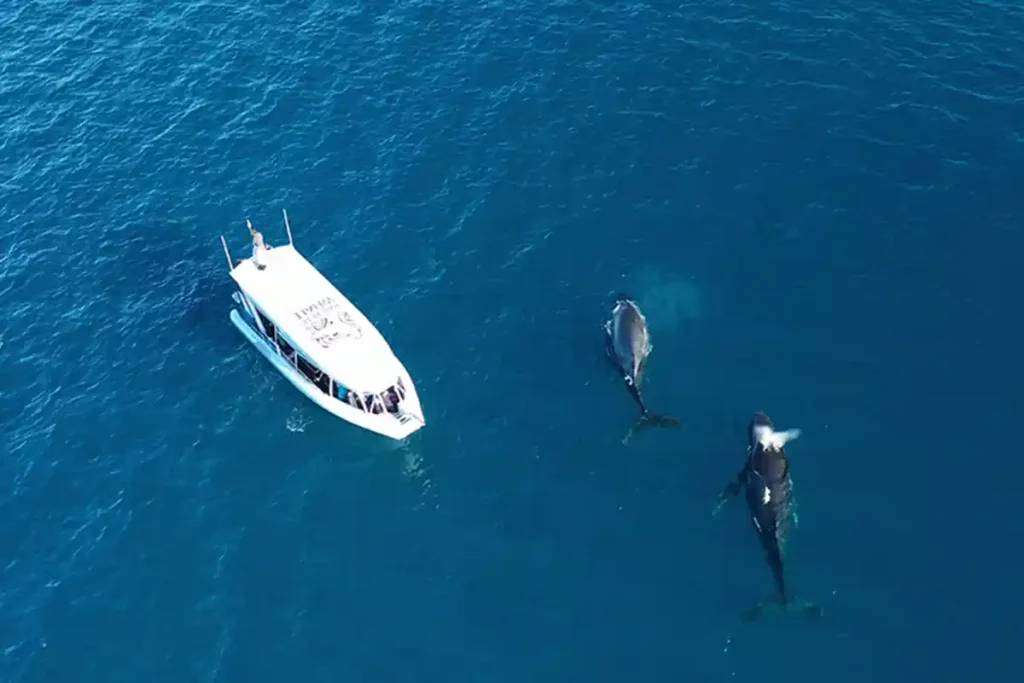
Between July and November, more than 25,000 Humpback whales travel the “humpback highway” down the east coast of Australia to their feeding grounds in Antarctica. Hervey Bay is the first stop for this southerly migration. Each year more than 8,000 individuals use these calm, protected waters to rest, socialize, and nurse their newborn calves before continuing south. Due to the prevalence of nursing mothers, females outnumber males three to one in the bay.
The first group to arrive, usually from mid-July to the end of August, are young whales and mature females who are either resting or newly pregnant. Mature lactating females with newborn calves arrive from August to September. Adult males arrive somewhere in between but may loop around to different locations as they search for females to mate with. The famous white humpback whale called Migaloo, is also frequently sighted in the region!
Pacific Whale Foundation Eco-Adventures Australia has been researching humpback whales in Harvey Bay for the past 30 years. You can join them on the Ultimate Hervey Bay Whale Watching trips to see and learn about the migrating whales.
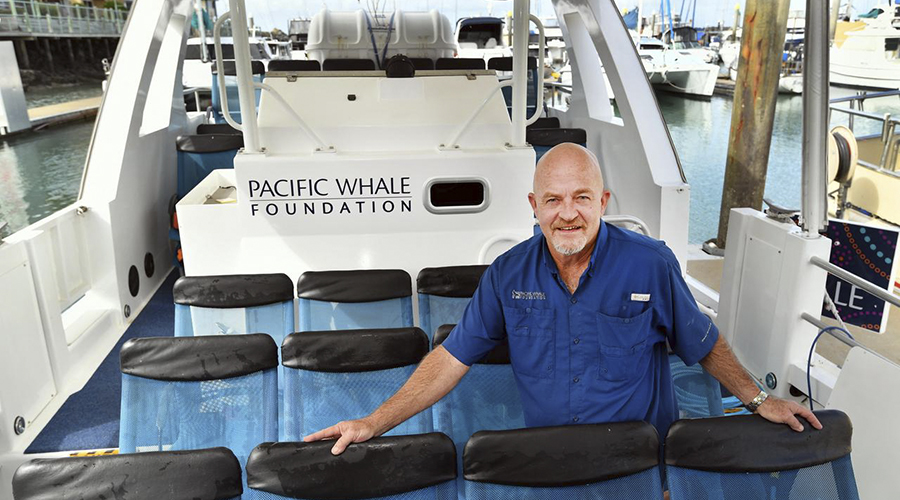
“Whales have changed my life and I am very much about embracing conservation and teaching others about the marine environment” – Andrew Ellis, Director of Pacific Whale Foundation Eco-Adventures Australia
The profits from these trips are used for scientific research, ocean conservation programs, and running marine education programs for kids. This is a great opportunity for you to contribute to scientific research and learn about whale ecology and behavior, see whale moms and calves socialize, and even listen to their songs with the aid of hydrophones.
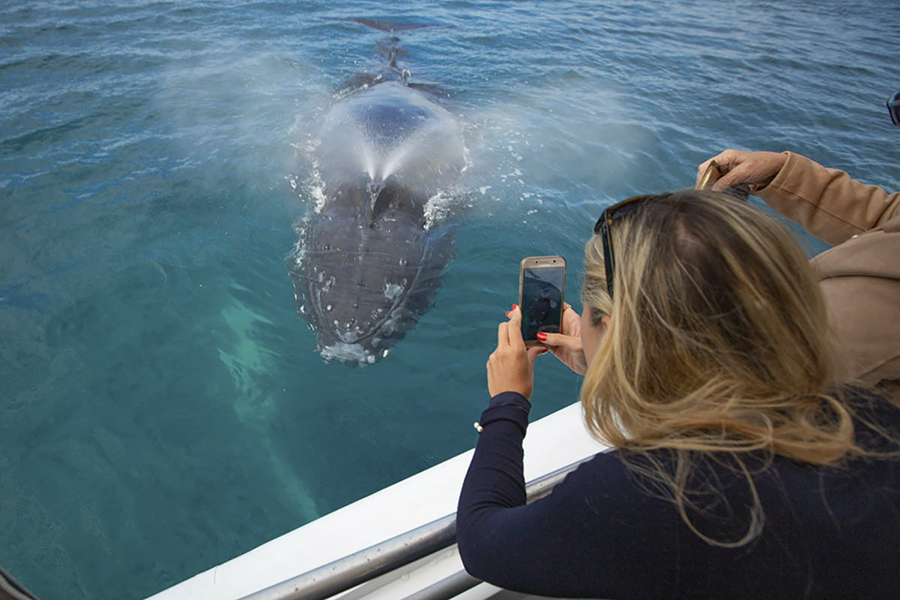
How can you contribute to their research? Pacific Whale Foundation runs photo ID programs that aim to study whale longevity and behavior. With over 6,900 individual humpback ID’s, their photo catalog is one of the biggest in the world. Humpback whales are identified by the pattern on their tails. The pigments at the back of the tail (or “fluke”) and its trailing edges are unique to each whale. If you have photos of humpback tails that were taken at Hervey Bay, you can donate them here.
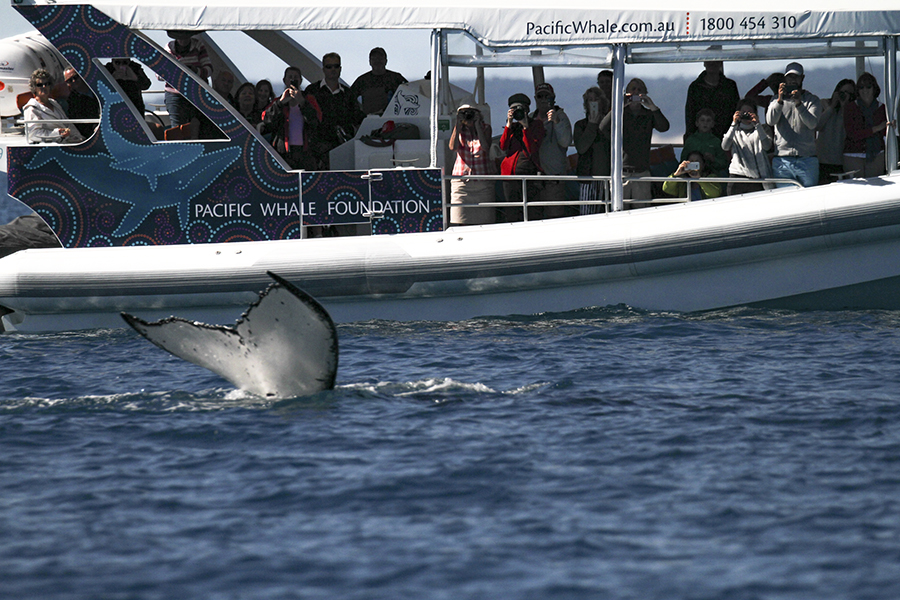
During your whale-watching boat tour, you can also learn about whale conservation and how climate change will affect humpback migration and the health of our oceans. Perhaps the most fascinating thing you’ll get to learn about is whale songs. Whale songs weren’t discovered until 1968 only very recently have researchers started to understand what they’re all about. With the aid of hydrophones, you’ll be able to hear whales even if they are far away and you can’t see them.
“…a singing whale can be picked up kilometers away, depending on the environmental conditions.” Dr. Barry McGovern
The small vessels used by the Pacific Whale Foundation (max of 40 people) are referred to as floating classrooms with researchers, marine biologists, guides, and visitors all sharing the same experience.
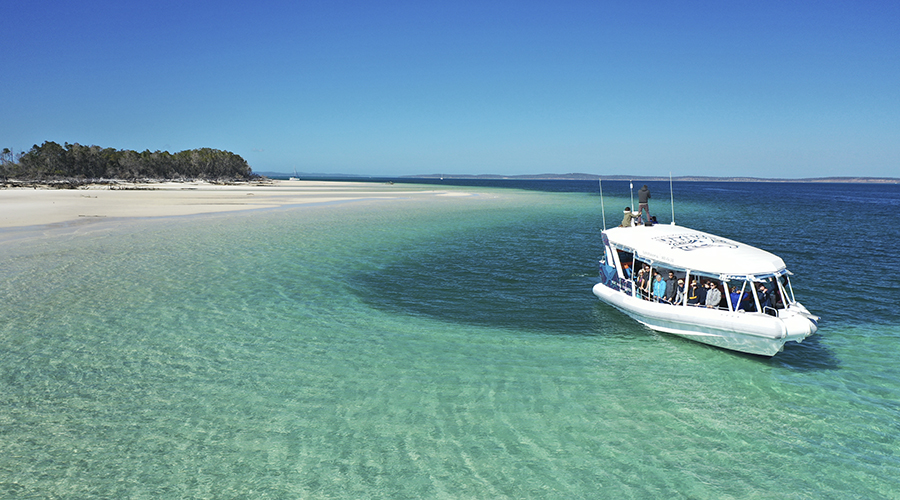
Other cetaceans can be seen in the area, including the Australian humpback dolphin, false killer whales, minke whales, Indo-Pacific bottlenose dolphins, and increased sightings of southern right whales. One Pacific Whale Foundation project is studying dolphin health and population status in Hervey Bay.
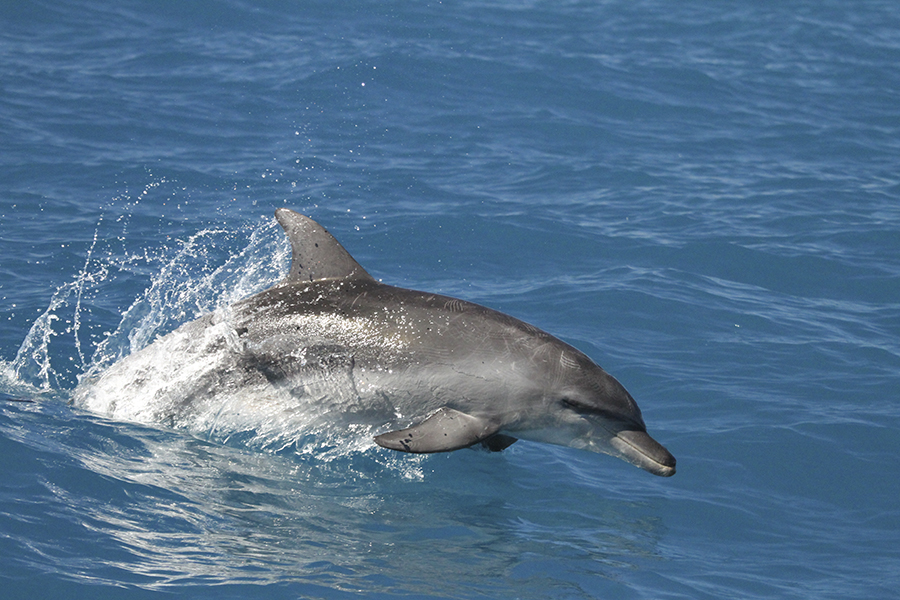
Whale watching at Fowlers Bay, South Australia
For those of you who would like to experience a multi-day whale watching voyage, Australian Coastal Safaris runs a 4-day trip in South Australia that includes a visit to Fowlers Bay. The Eyre Peninsula Winter Whale Watching and Wildlife Encounters tour is the perfect way to get to know the marine and terrestrial wildlife of the Eyre Peninsula.
With a stunning backdrop of the rugged cliffs of Point Fowler, you can enjoy a leisurely whale-watching cruise to see southern right whales and humpback whales as they travel through the bay.
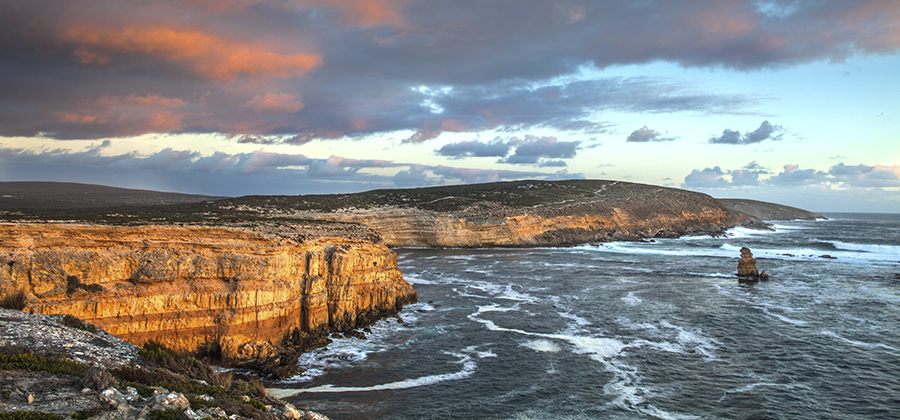
Up to 80 whales have been spotted at the bay, making this bay a great place to watch whales while they are resting with their young and socializing with other whales. Your boat will also have a hydrophone, so you’ll be treated to the enchanting songs of the humpbacks.
This trip is perfect if you want to combine a whale-watching adventure with a visit to the Australian sea lions of Point Labatt and the iconic wombats and koalas that call the central southern coast home.
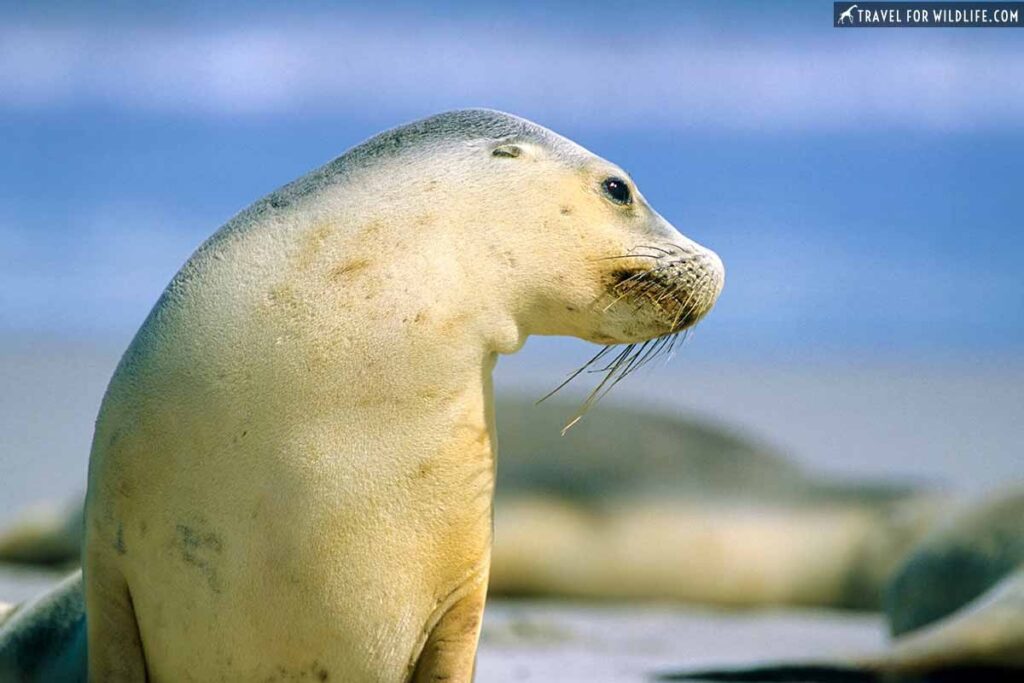
Whale watching in Bremer Bay, Western Australia
The rugged south coast of south Western Australia between Esperance and Flinders Bay provides shelter for western populations of southern right whales in winter. This is also a transit point for humpbacks that are making their way through here on their annual migration. Beaked whales are also regulars of this highly diverse area.
Things get more exciting when killer whales, who have taken a liking to the Bremer Canyon, take advantage of this whale parade and hunt close to shore.
Orca watching at Bremer Bay
Just 1.5 hours off the coast of Bremer Bay, Bremer Canyon has become a favorite haunt for a group of more than 150 orcas. Every January to April they return to this underwater canyon where they’ve become a regular sight for whale watchers. Orcas (aka “killer whales”) are not technically whales at all but are the largest of the dolphins. However, they are known to hunt and kill large whales.
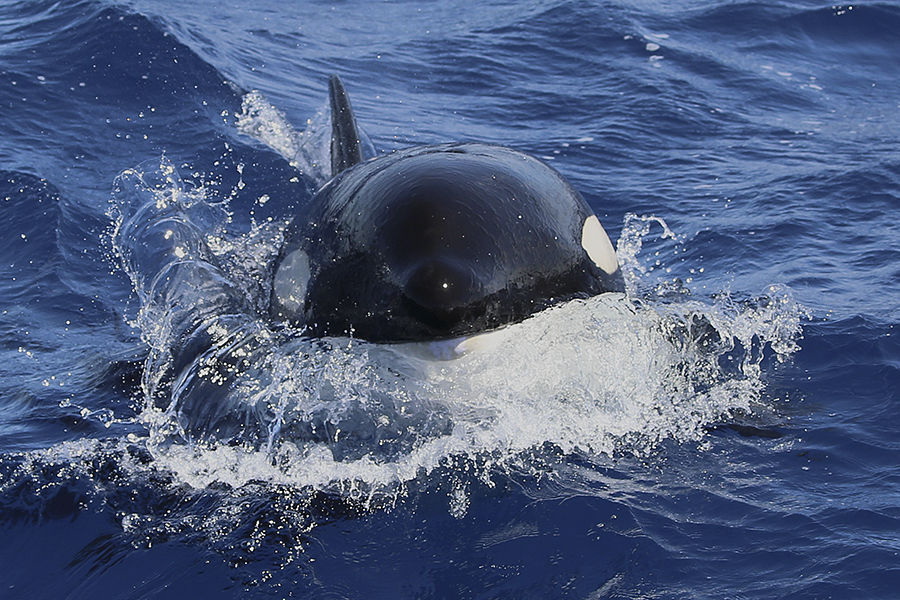
Previously finding Orcas in the region was opportunistic, but since Naturaliste Charters started their expedition around a decade ago, the crew have become experts in finding the learning the movements of the pod with Orcas seen almost daily.
The best way to experience this phenomenon is with Naturaliste Charters who run a full-day Bremer Canyon Killer Whale Expedition.
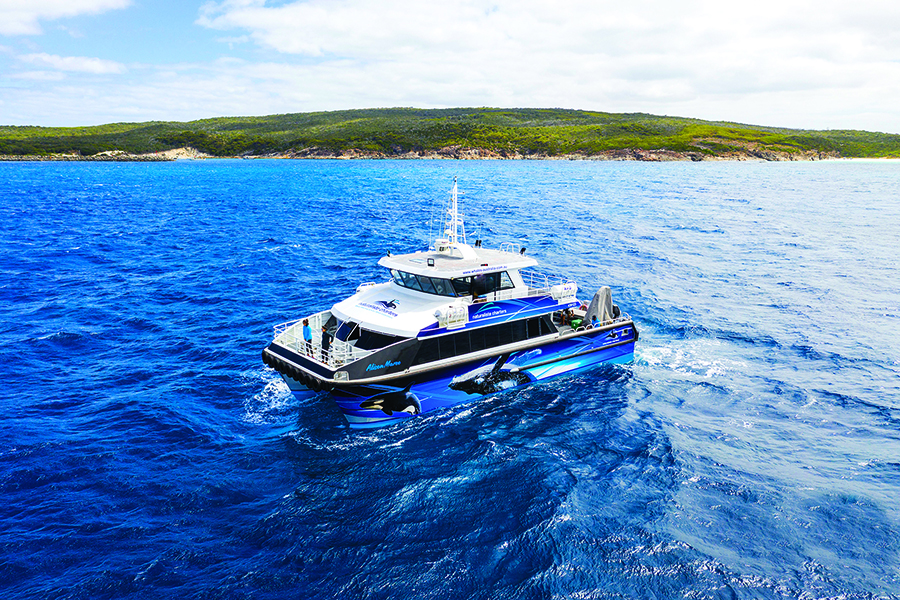
While watching orcas is in itself an incredible experience, what happens at Bremer Bay is no less than extraordinary. Orcas are in Bremer Bay to follow other whales. They have not only accepted whale-watching boats and seem unbothered by them, but they have learned how to use these boats to their advantage during hunts. For example, they have been seen driving Beaked Whales right toward the boats and pinning them against the hull for an easier kill.
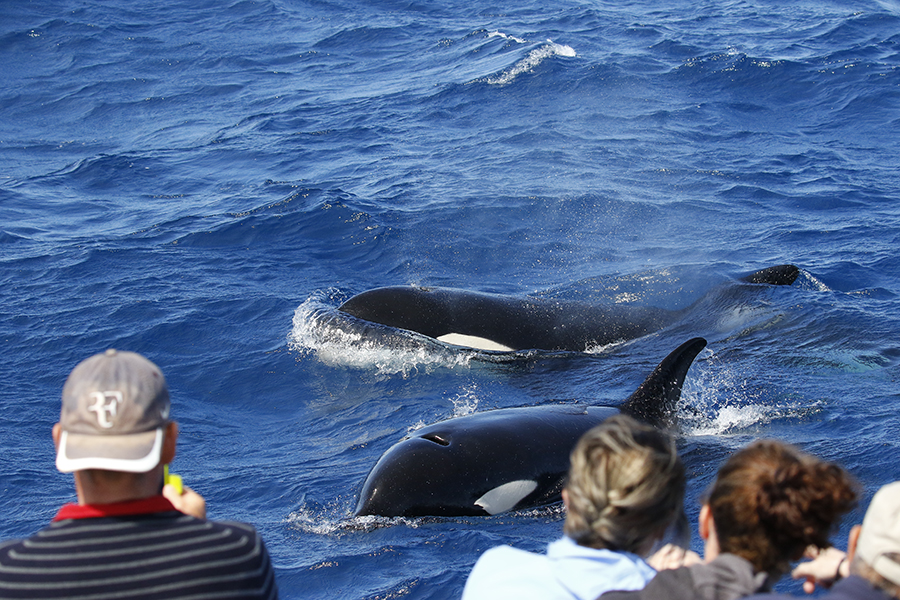
Along with beaked whales, the area is also a transit point for humpbacks passing through on their migration north, and a winter breeding ground for southern right whales.
These large orca predation events often attract thousands of seabirds hoping to get some scraps. great-winged petrels, white-faced storm-petrels, flesh-footed shearwater, little shearwater, black-browed albatross, shy albatross, and Indian yellow-nosed albatross are some regulars.
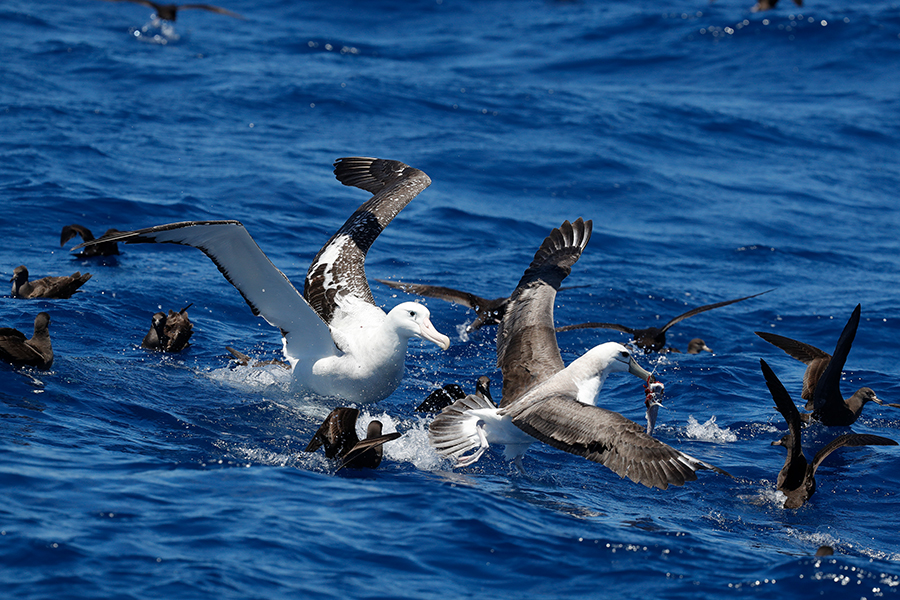
Each day is different and anything can happen when you join one of the Bremer Bay orca tours. Whether watching orcas relaxing or witnessing a hunt, you should be prepared for an adrenaline rush at any time during your killer whales tour in Bremer Bay.
This wildlife spectacle will be one of the highlights of your trip to Australia, and maybe, if you get lucky, your entire life! Marine biologists on board will answer any questions you have about orca behavior and will interpret any interactions with other marine species.
“On an expedition, we are exploring the unknown. It’s genuinely mind-blowing.” Dave Riggs, filmmaker and Naturaliste Charters tour guide.
During your killer whale expedition with Naturaliste Charters, you’ll have the chance to help whale researchers. Part of your fee goes to the Department of Biodiversity, Conservation and Attractions, Western Whale Research, and to Project ORCA.
You can also contribute by donating your orca whale photos for the creation of a Photo-ID catalog that Project ORCA and the Centre for Marine Science and Technology (CMST) at Curtin University are developing. This information is crucial for the study of orca populations, their behavior, and conservation. Your participation is greatly appreciated.
If you take any photos of orcas, make sure to focus on their eye patches, any marks on their dorsal fin, and their saddle patch, as this is how they are identified.
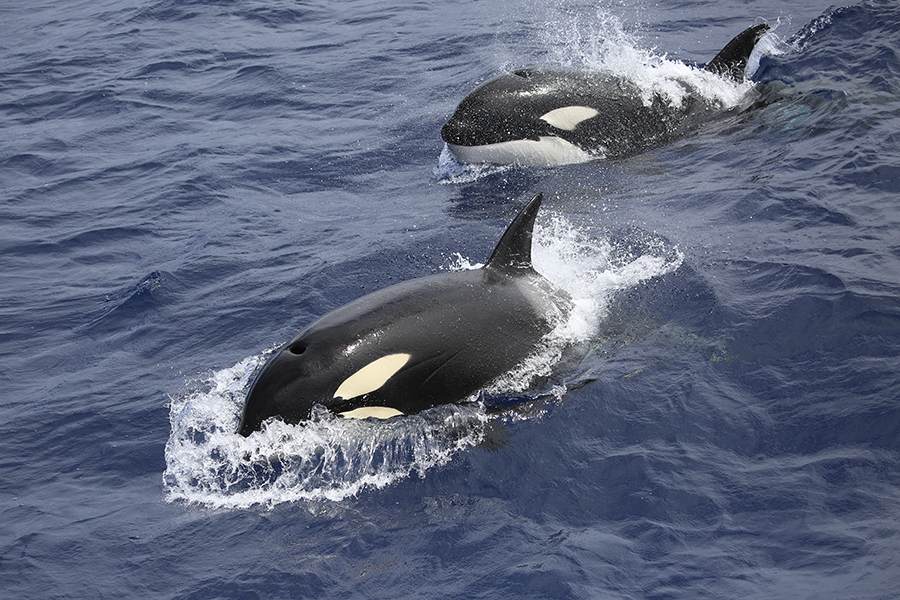
The blue whales of Geographe Bay, Western Australia
A few hours west of Bremer Bay, along the stretch of coast between Augusta and Dunsborough, is another great spot to catch up with whales. But not just any whale!
Here you have a chance to see the largest animal that has ever existed on the planet, far larger than even the biggest dinosaur: the blue whale! It can weigh as much as 200 tons! (That’s at least 30 elephants.)
For the past few years, biologist Pia Markovic has been researching the pod dynamics of these rare blue whales. Not long ago it was believed that blue whales were solitary, but thanks to this new research it is now known that blue whales travel in pods.
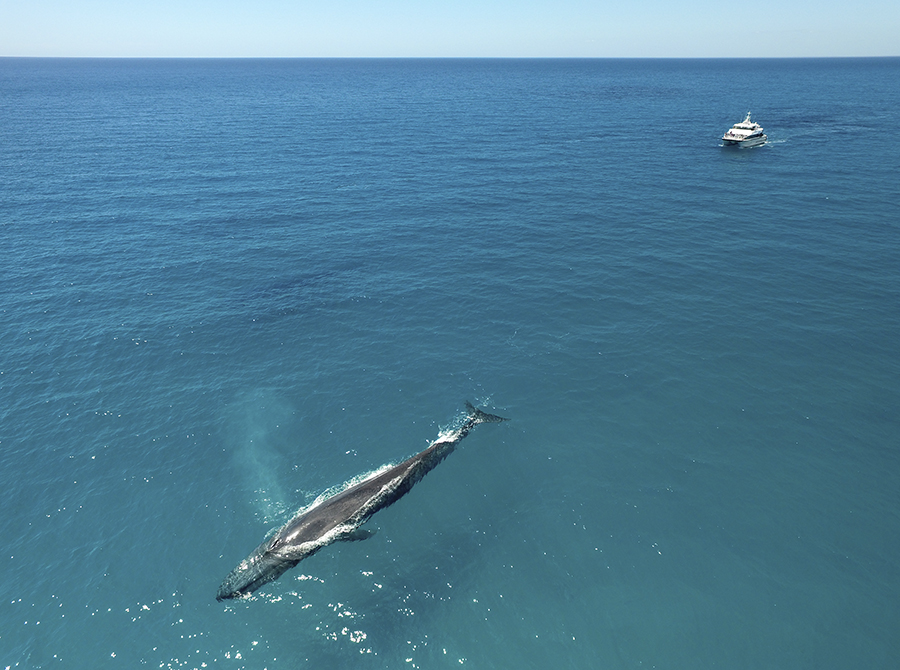
Their blue whale research also includes photo ID’ing whales. In the case of blue whales, they are looking at dorsal fins and unique body markings as identifiers. By identifying the individual whales, researchers can get an idea of pod dynamics and social structure within these groups.
“For us, it’s the group dynamics that are really remarkable. What direction is the pod heading in? How big are the whales? Is there a calf in the pod? Any information collected is donated to Western Whale Research who have been conducting whale surveys in the area for the past two decades.” Pia Markovic, Naturaliste Charters
If you dream of watching blue whales in Australia, visit Geographe Bay from November to December and join one of these whale-watching trips with Naturaliste Charters.
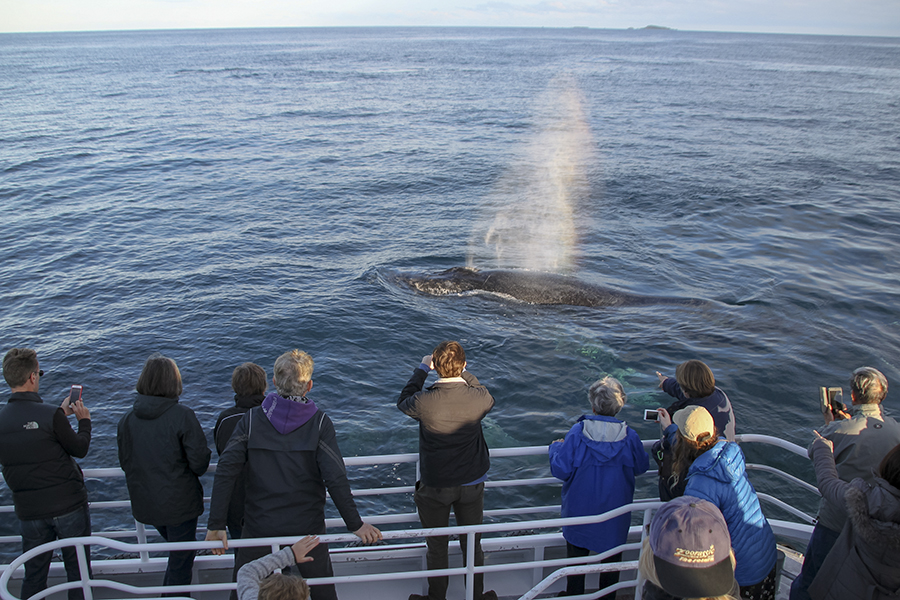
Swimming with whales in Ningaloo, Western Australia
A World Heritage Site, the Ningaloo Coast is located in the northwest region of Western Australia along the Indian Ocean some 745 miles north of Perth.
Ningaloo Reef, one of Australia’s finest gems, is 160 miles long and one of the longest near-shore reefs in the world.
Between March and August, coinciding with mass coral spawning events, around 300 to 500 whale sharks aggregate here annually. Whale sharks are the world’s largest shark species and are only called “whale” sharks because of their immense size. (See more whale shark facts here.)
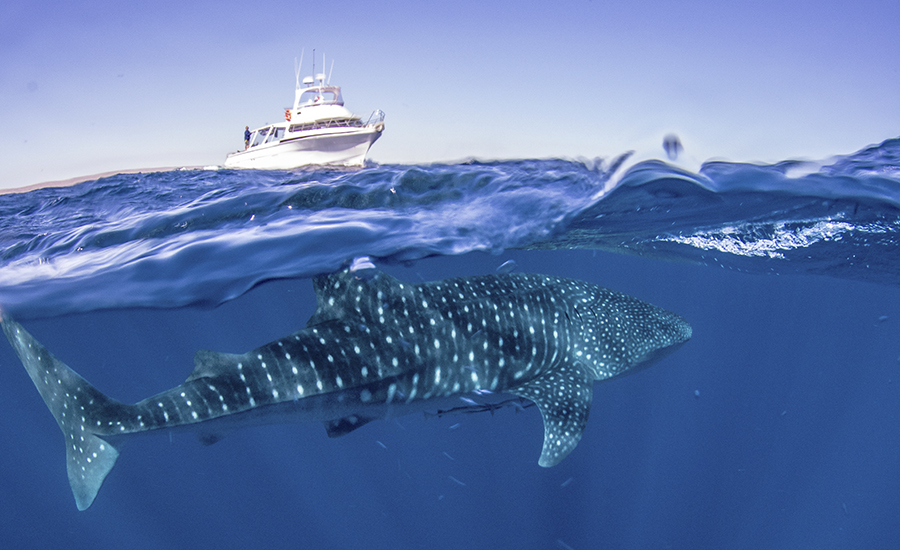
It’s the perfect time to visit the reef and go swimming with whale sharks, sea turtles, and manta rays. This is one of the world’s largest aggregations of whale sharks and a must for any visit to Western Australia. You can swim with whale sharks in their natural habitat on an Exmouth Dive & Whalesharks Ningaloo whale shark tour. But whale sharks aren’t the only giants in the neighborhood.
From July to November, about 30,000 humpback whales travel along the Ningaloo Coast on their way to and from their winter breeding grounds ranging from Exmouth Gulf to the Kimberley. Here you can experience one of the world’s most incredible whale-watching adventures: a swim with humpback whales.
Swimming with whales is becoming more popular in Australia. To ensure minimal disturbance to mother whales and their young, there are strict rules are in place. To have a positive experience, choose one of the tour operators that only takes a small group of people at a time and that contributes to the conservation of whales and the reef. It is priceless to know that your visit has contributed to the well-being of these incredible animals and their habitat.
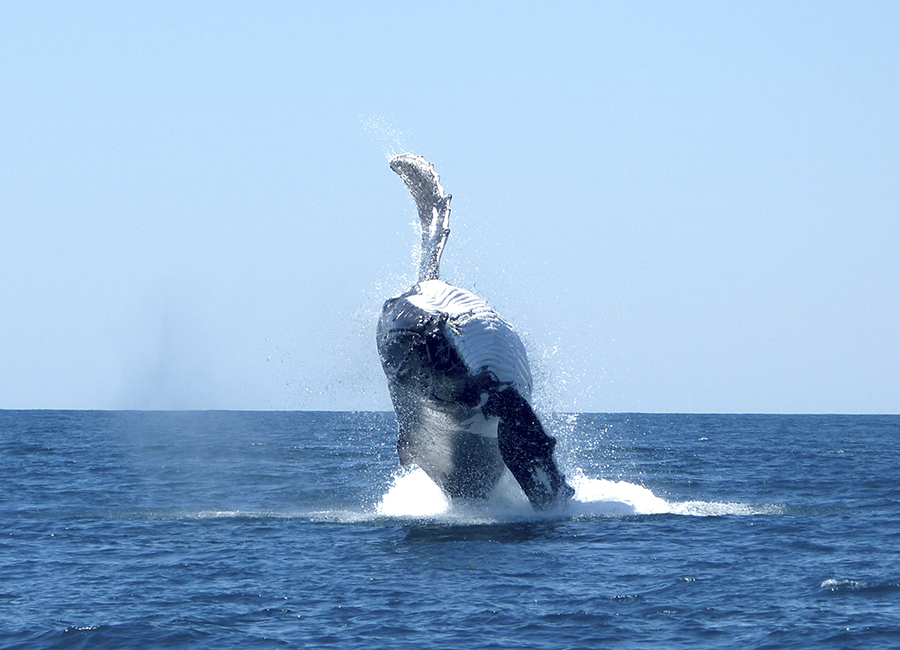
Exmouth Dive & Whalesharks Ningaloo offer whale watching tours, reef snorkeling, manta rays tours, swimming with whale shark tours, and swim with humpback whales tours.
“The first time I swam with a humpback whale took my breath away and it felt like there was nothing else in the world except this giant of the ocean and me.” – Corine Mathews, Exmouth Dive & Whalesharks Ningaloo
Their tours contribute to humpback whale research, and safety (for both whales and humans) comes first. There are pilots in the air monitoring the whales and in contact with the skippers by radio. The whole team is in constant communication to ensure a safe and life-changing experience.
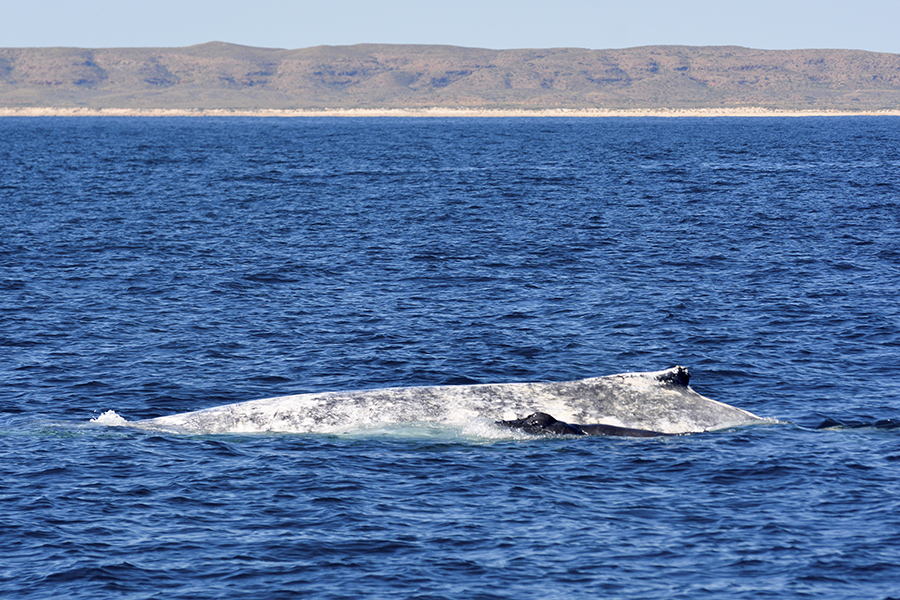
Sometimes the swim will involve a lone whale, sometimes it will have a calf in tow, and sometimes there’ll be a few whales around. Each day is different.
After the whale swim, you’ll have the opportunity to snorkel on the reef where you might encounter sea turtles and rays. Even if you don’t see a whale, keep your ears open during your snorkel on the reef. Those squeaks and grunts you hear are humpback whales! I can’t think of anything more exciting than snorkeling in one of the biggest reefs while listening to whales singing!
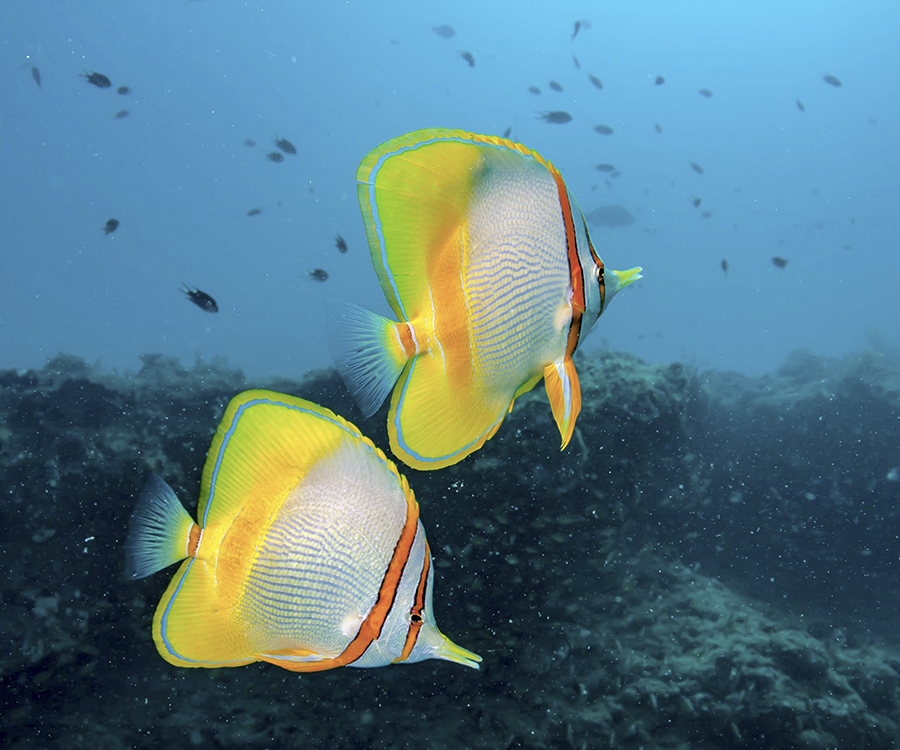
How you can help whales in Australia
All cetacean species are now legally protected in Australian waters, but they still face many human-caused threats including collisions with ships, fishing gear entanglement, underwater noise pollution, and climate change which affects ocean temperatures and conditions across their migration routes.
You can help Australian whales by joining responsible whale-watching tours that contribute to whale research and by following regulations that protect cetaceans. (Here’s a great set of whale and dolphin watching regulations from the Great Barrier Reef Marine Park) You can also contribute to citizen science projects that are learning about whale ecology by tracking individuals using photographs. Here are some great projects where you can contribute your images.
- Happy Whale (a global whale identification database)
- Pacific Whale Foundation (a good place to upload your whale photos from Hervey Bay)
- Project O.R.C.A. (a database of orca ID’s in Australia)
Whales of Australia
Here’s a list of all the species of whales, dolphins, and porpoises (cetaceans) encountered in Australian waters. See how many you can spot on your next whale-watching adventure!
Baleen whale species in Australia
- Antarctic minke whale
- Blue whale
- Dwarf minke whale (subspecies)
- Fin whale
- Humpback whale
- Pygmy right whale
- Sei whale Bryde’s whale
- Southern right whale
Toothed whale species in Australia ( including dolphins & porpoises)
- Andrews’ beaked whale
- Arnoux’s beaked whale
- Australian snubfin dolphin
- Blainville’s beaked whale
- Bottlenose dolphin
- Coastal bottlenose (Indo-Pacific) dolphin
- Common dolphin
- Cuvier’s beaked whale
- Dusky dolphin
- Dwarf sperm whale
- False killer whale
- Fraser’s dolphin
- Ginkgo-toothed beaked whale
- Gray’s beaked whale
- Hector’s beaked whale
- Hourglass dolphin
- Indo-Pacific humpbacked dolphin
- Killer whale
- Long-finned pilot whale
- Longman’s beaked whale
- Melon-headed whale
- Pantropical spotted dolphin
- Pygmy killer whale
- Pygmy sperm whale
- Risso’s dolphin
- Rough-toothed dolphin
- Shepherd’s beaked whale
- Short-finned pilot whale
- Southern bottlenose whale
- Southern right whale dolphin
- Spectacled porpoise
- Sperm whale
- Spinner dolphin
- Strap-toothed beaked whale
- Striped dolphin
- True’s beaked whale
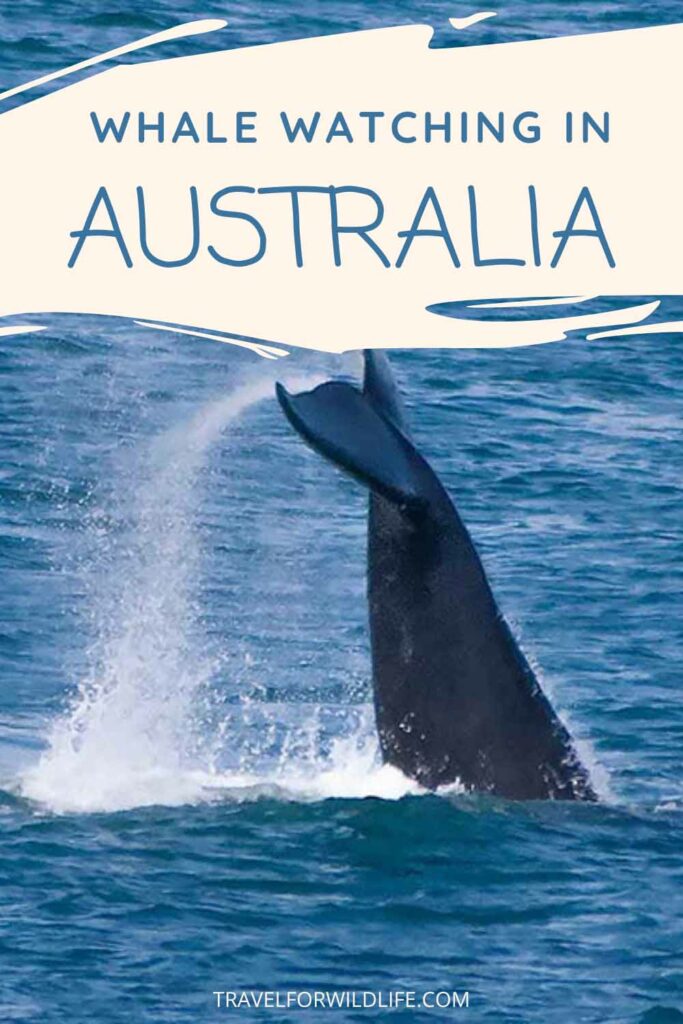

Cristina Garcia
Zoologist and wildlife photographer. She has worked in the field with jackals, wolves, cheetahs, & leopards. She serves on the Board of Directors of SEE Turtles, a non-profit sea turtle conservation organization.
Read her posts at Travel For Wildlife and see more of her work at Truly Wild, & Our Wild Yard.
